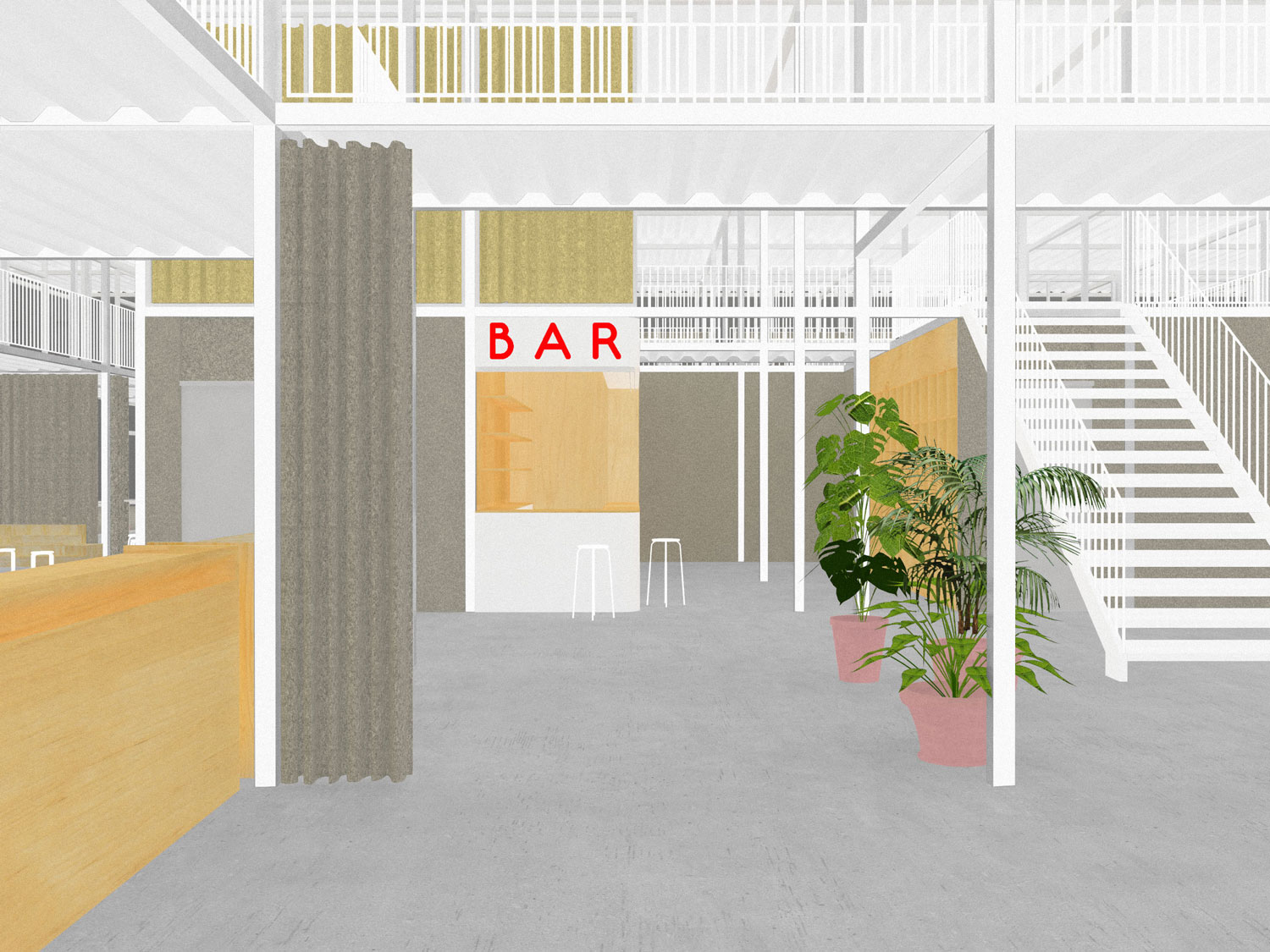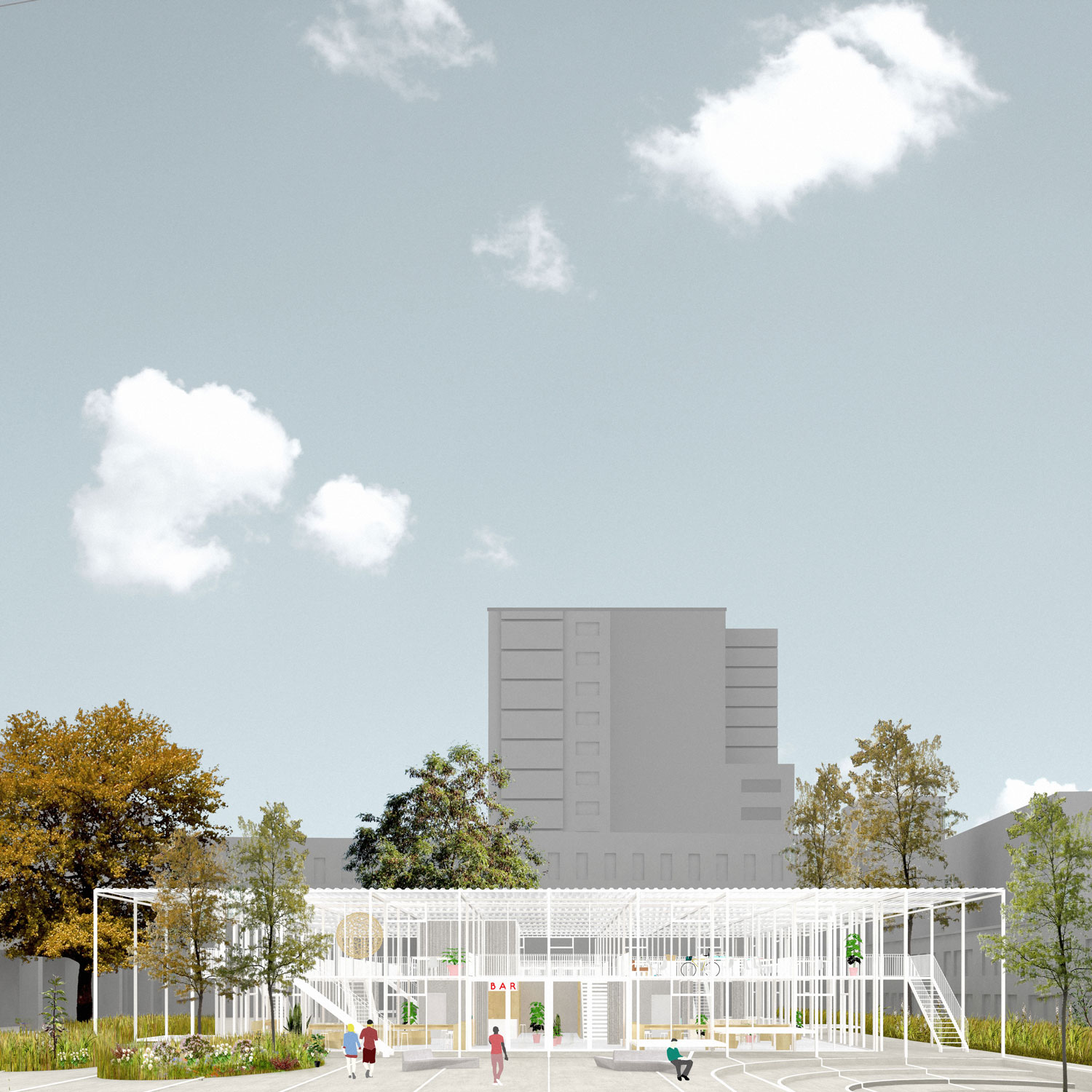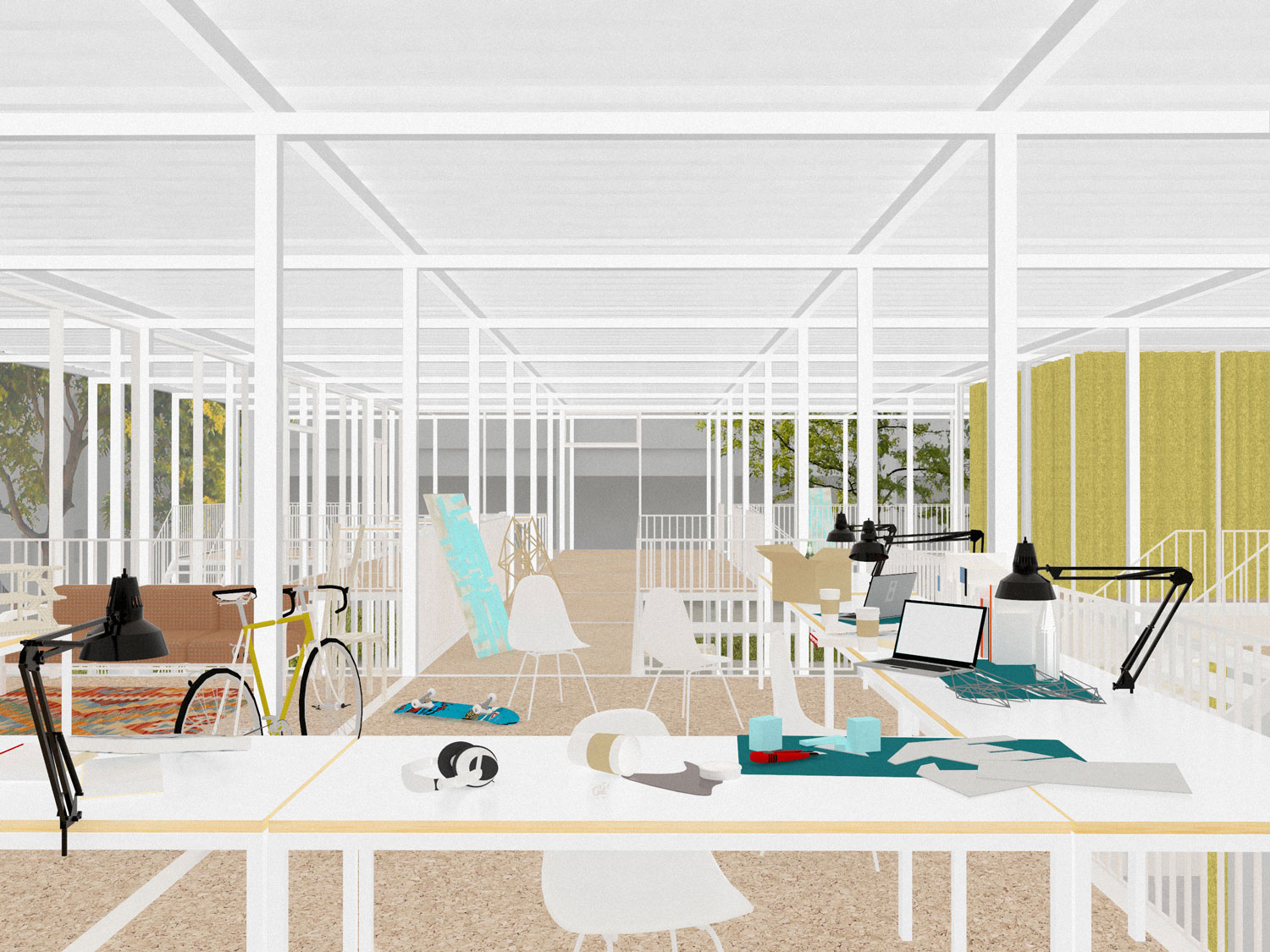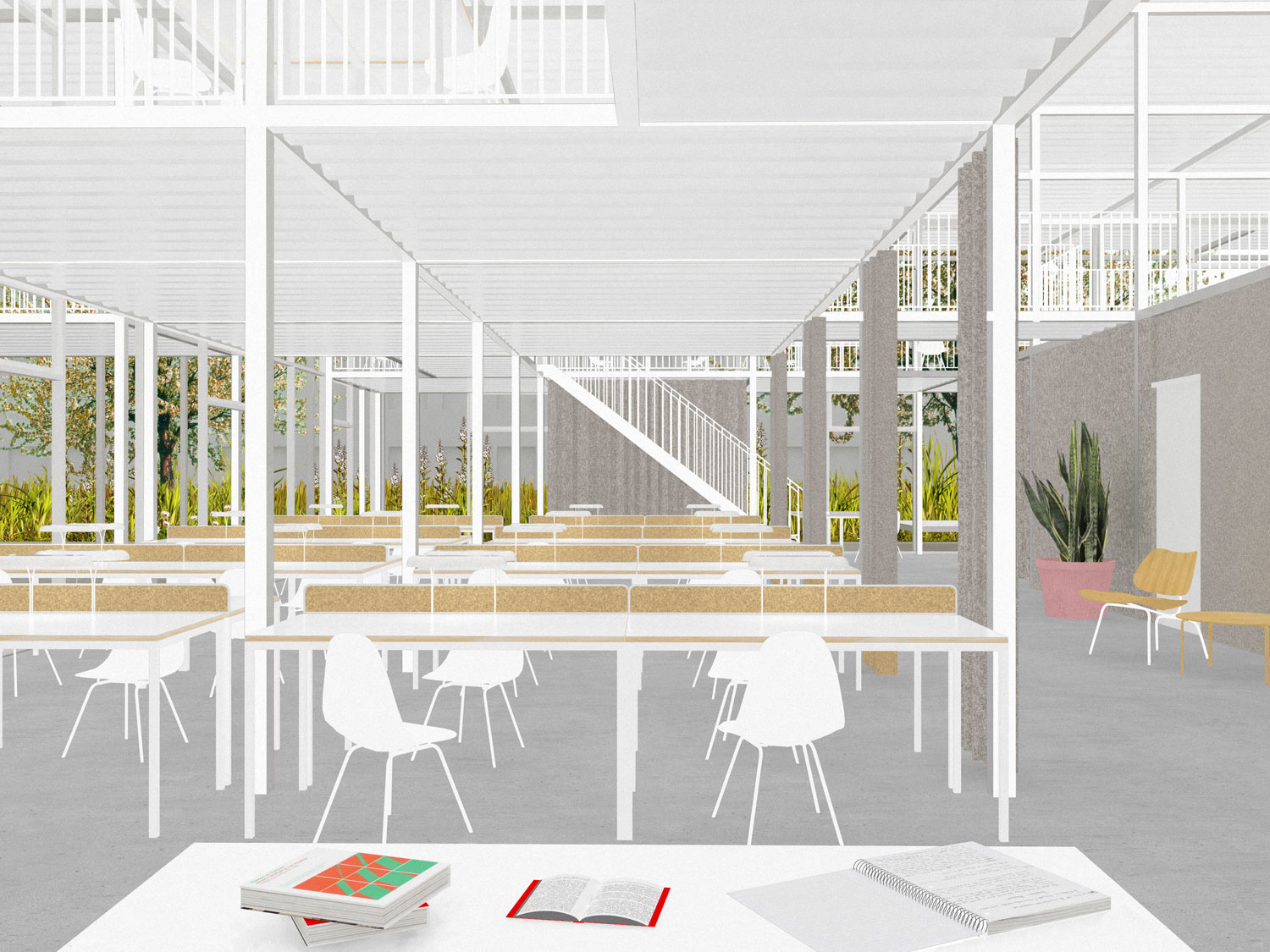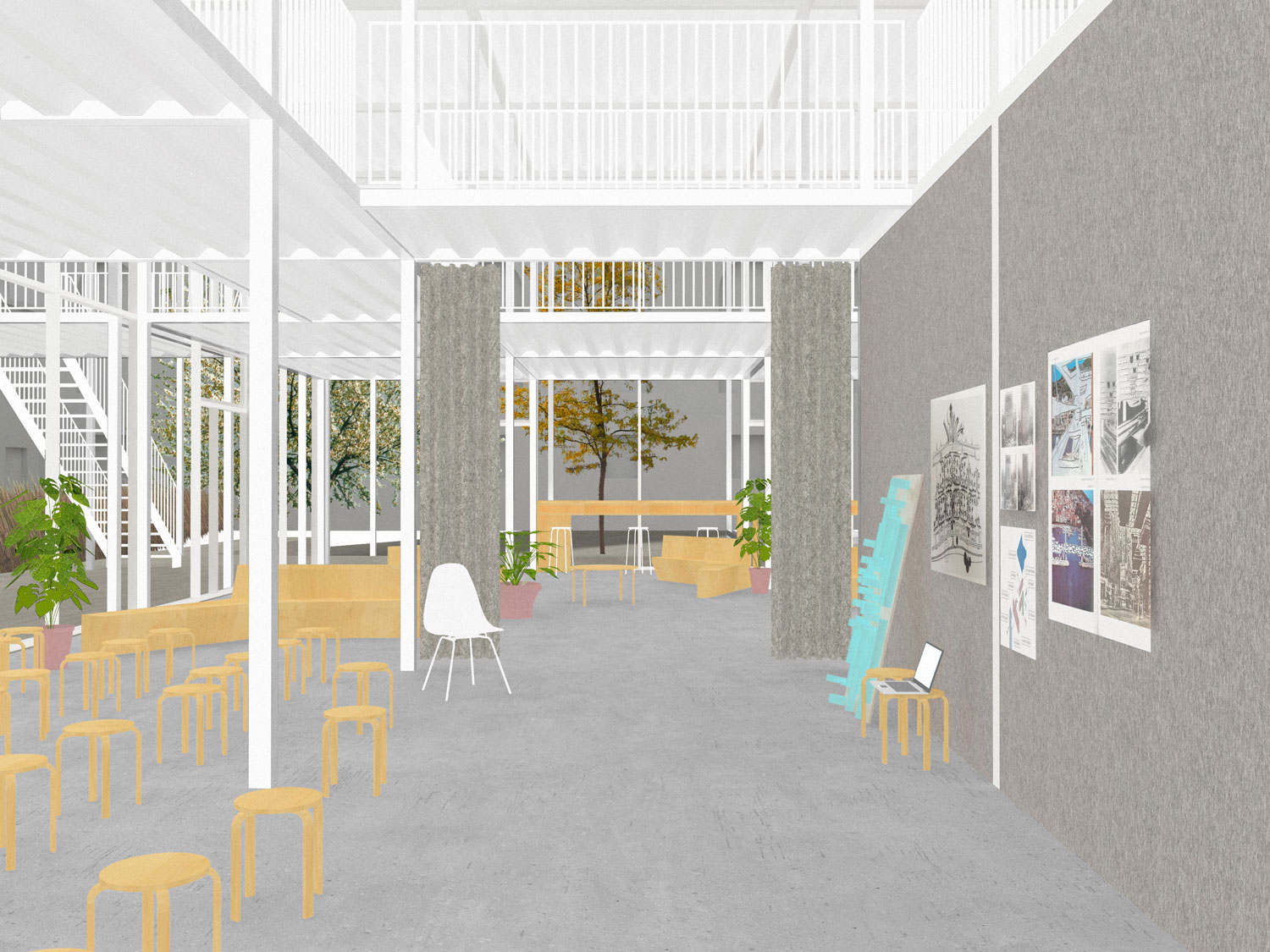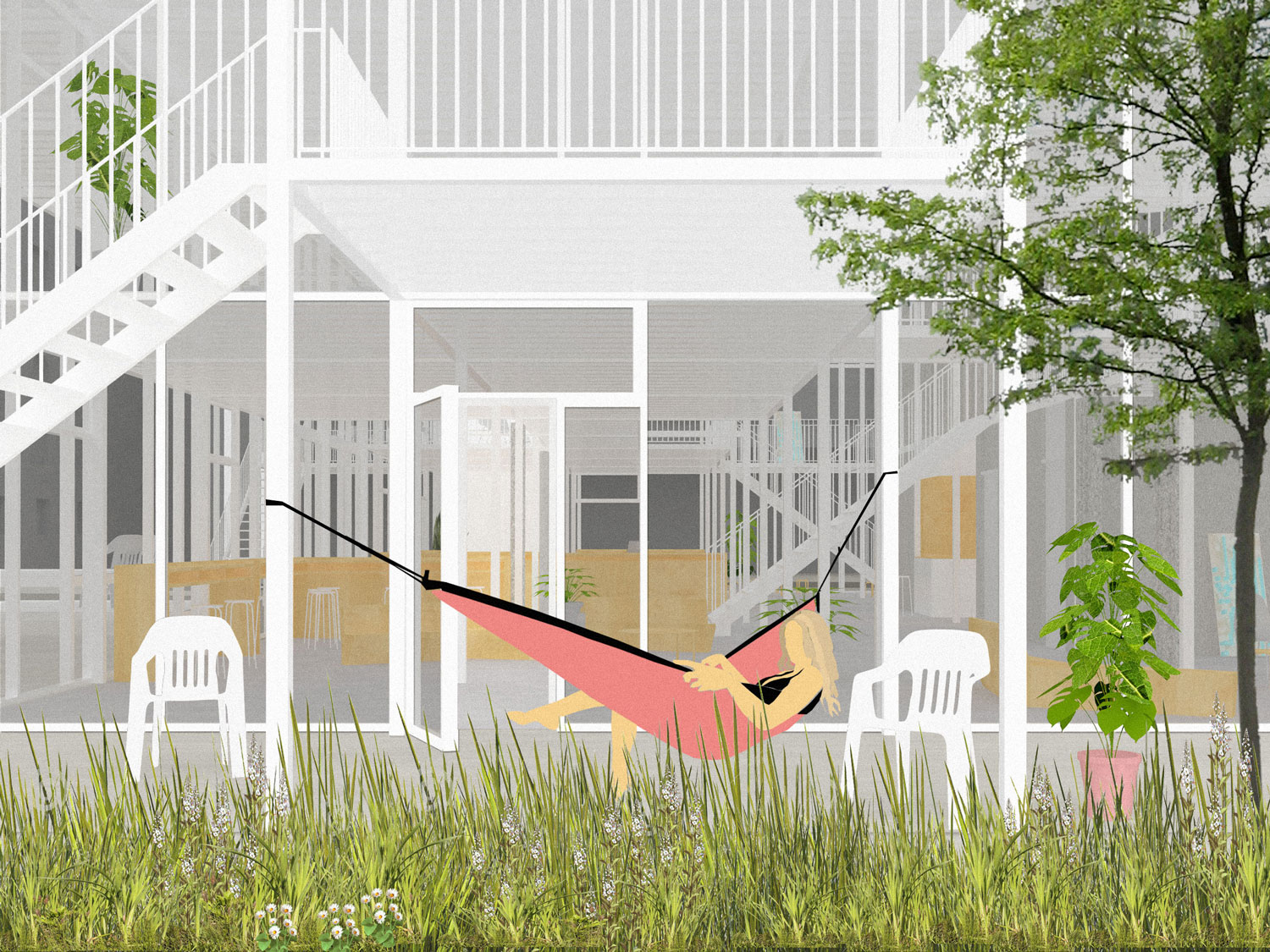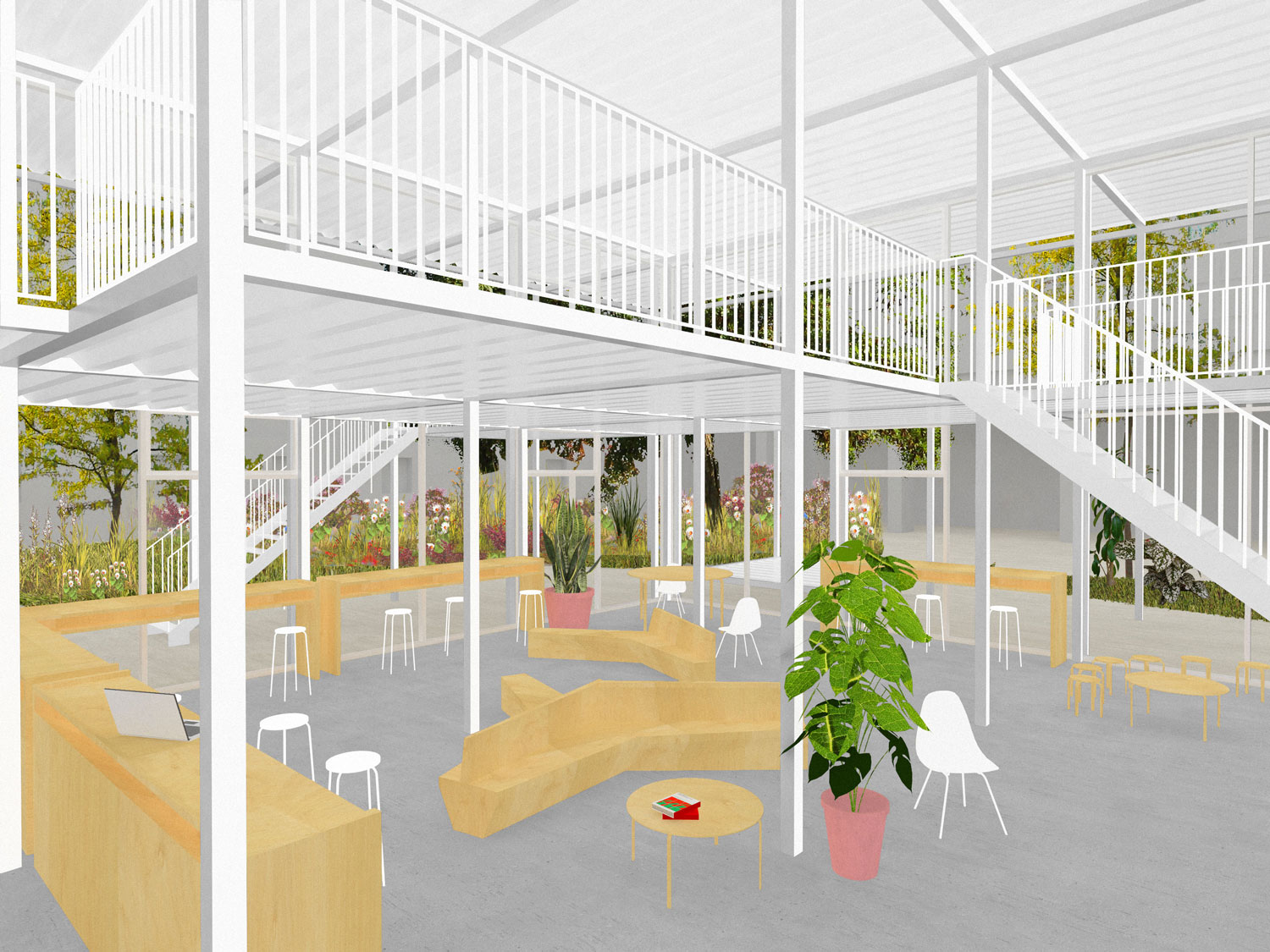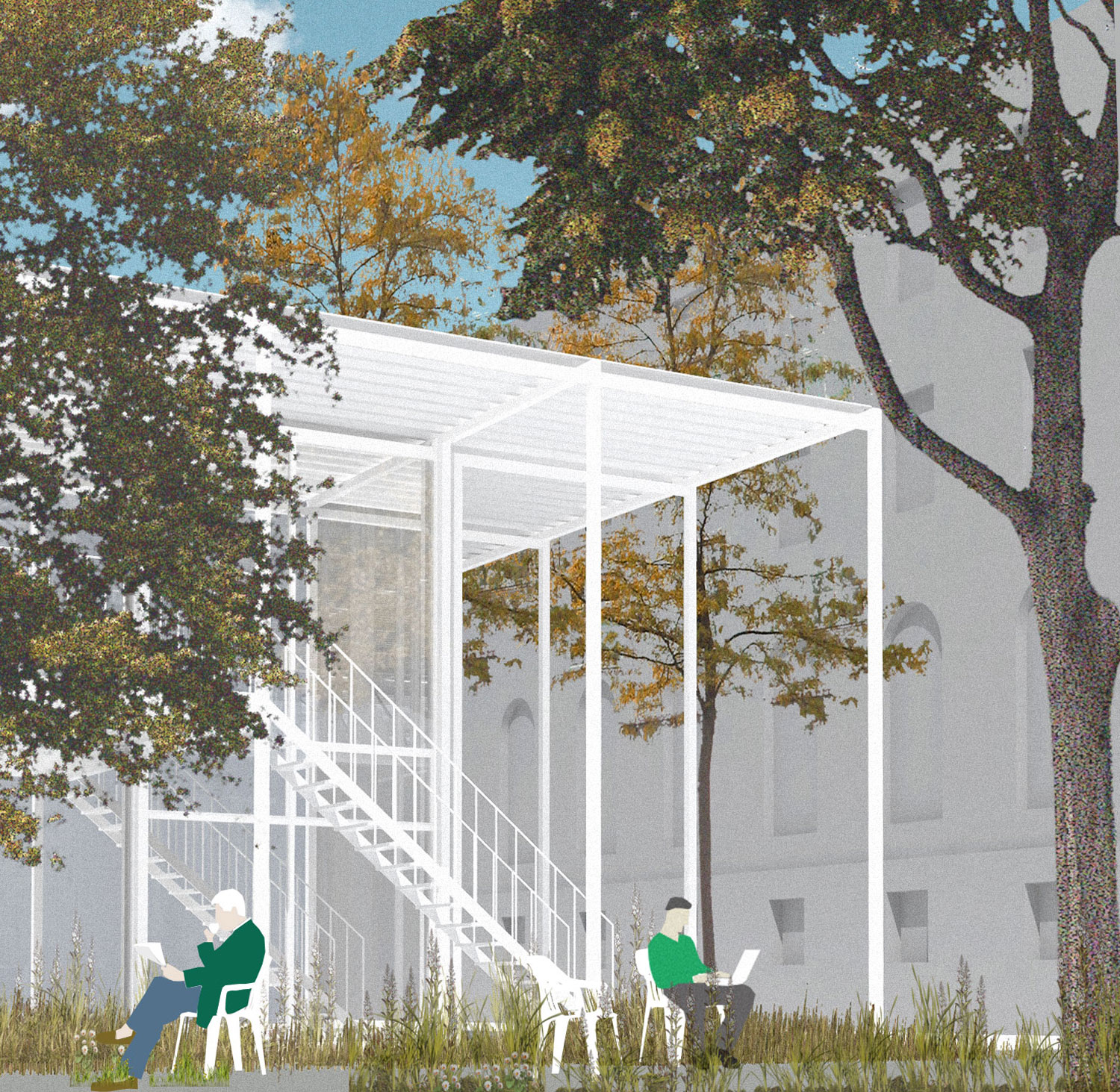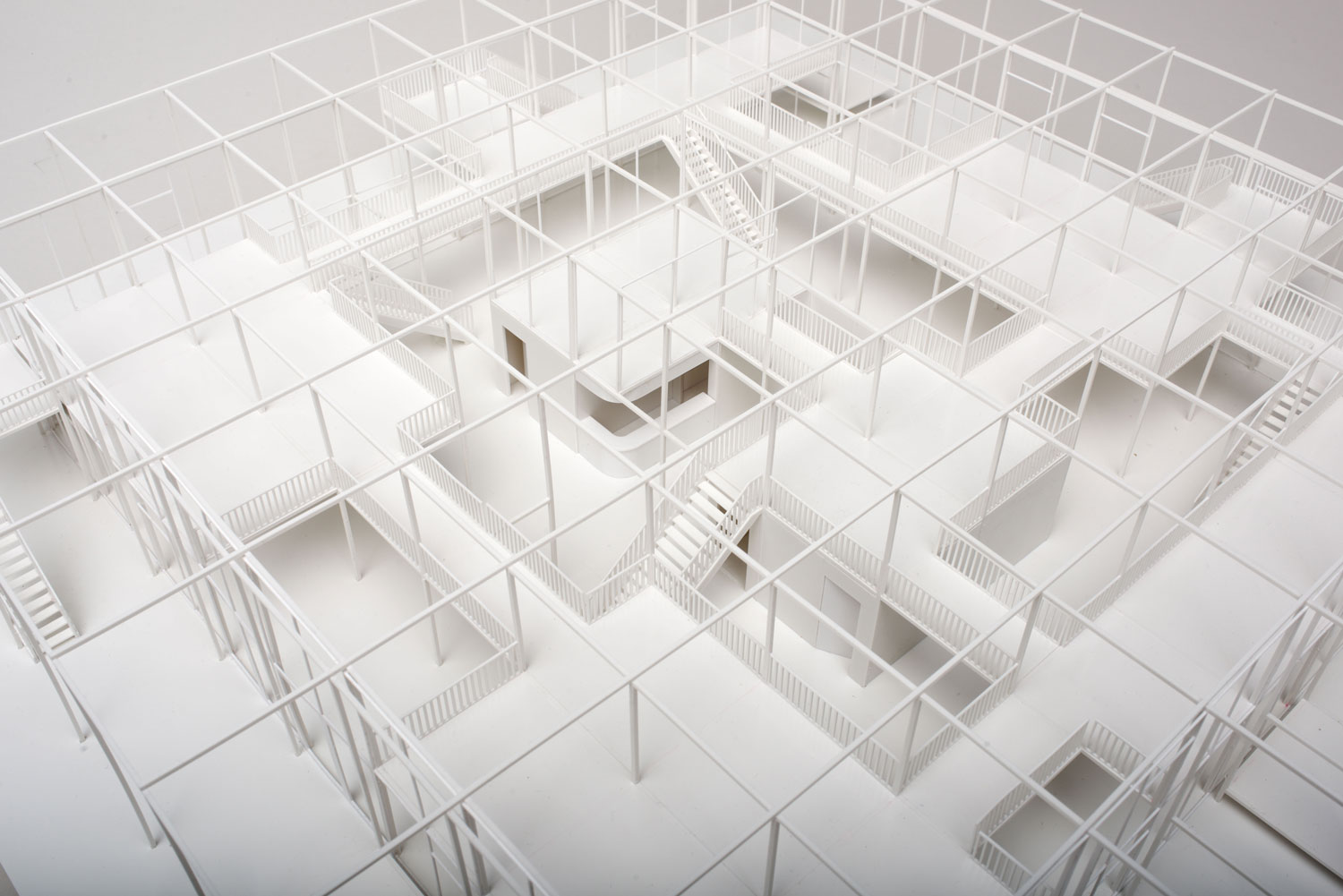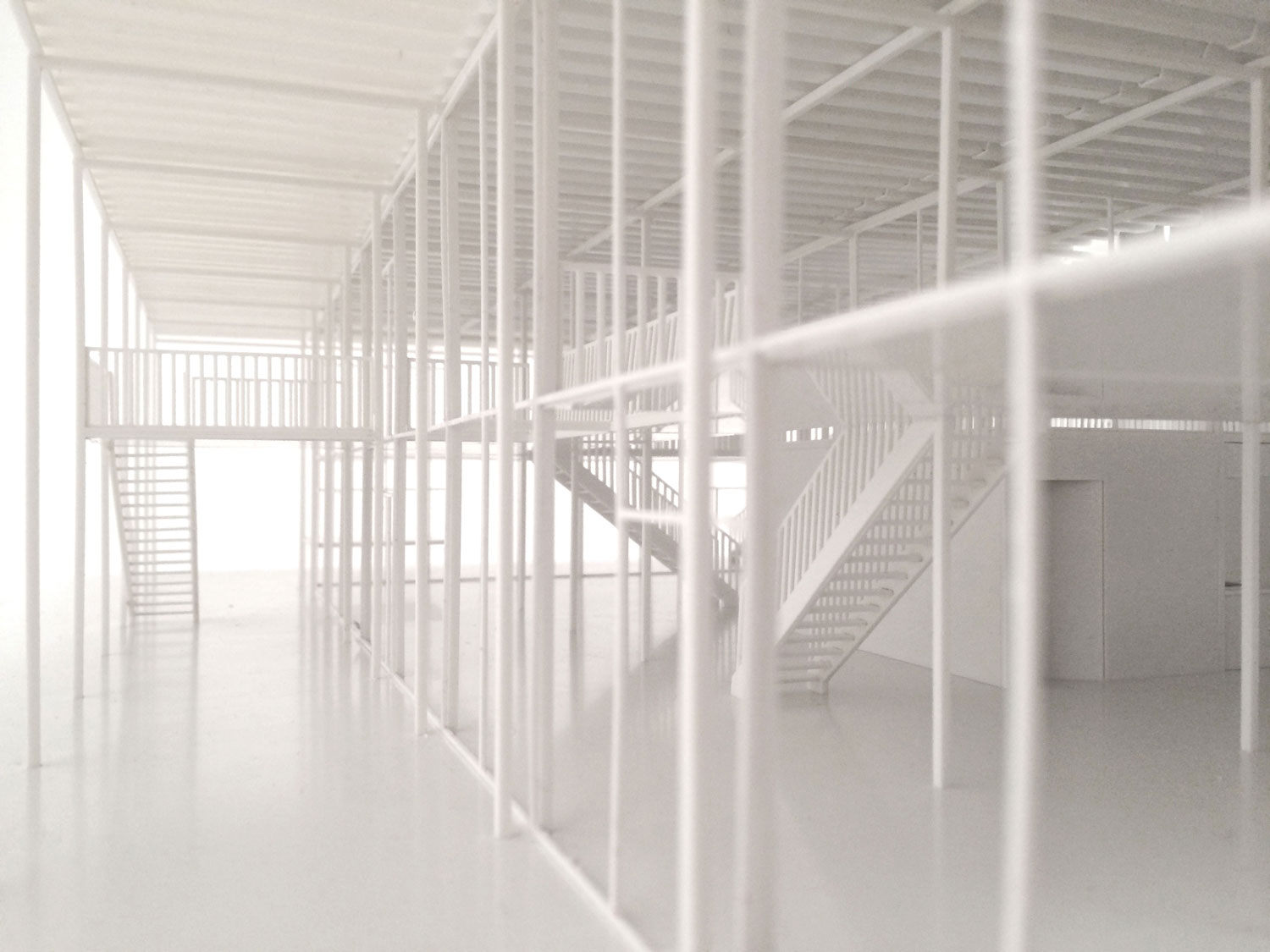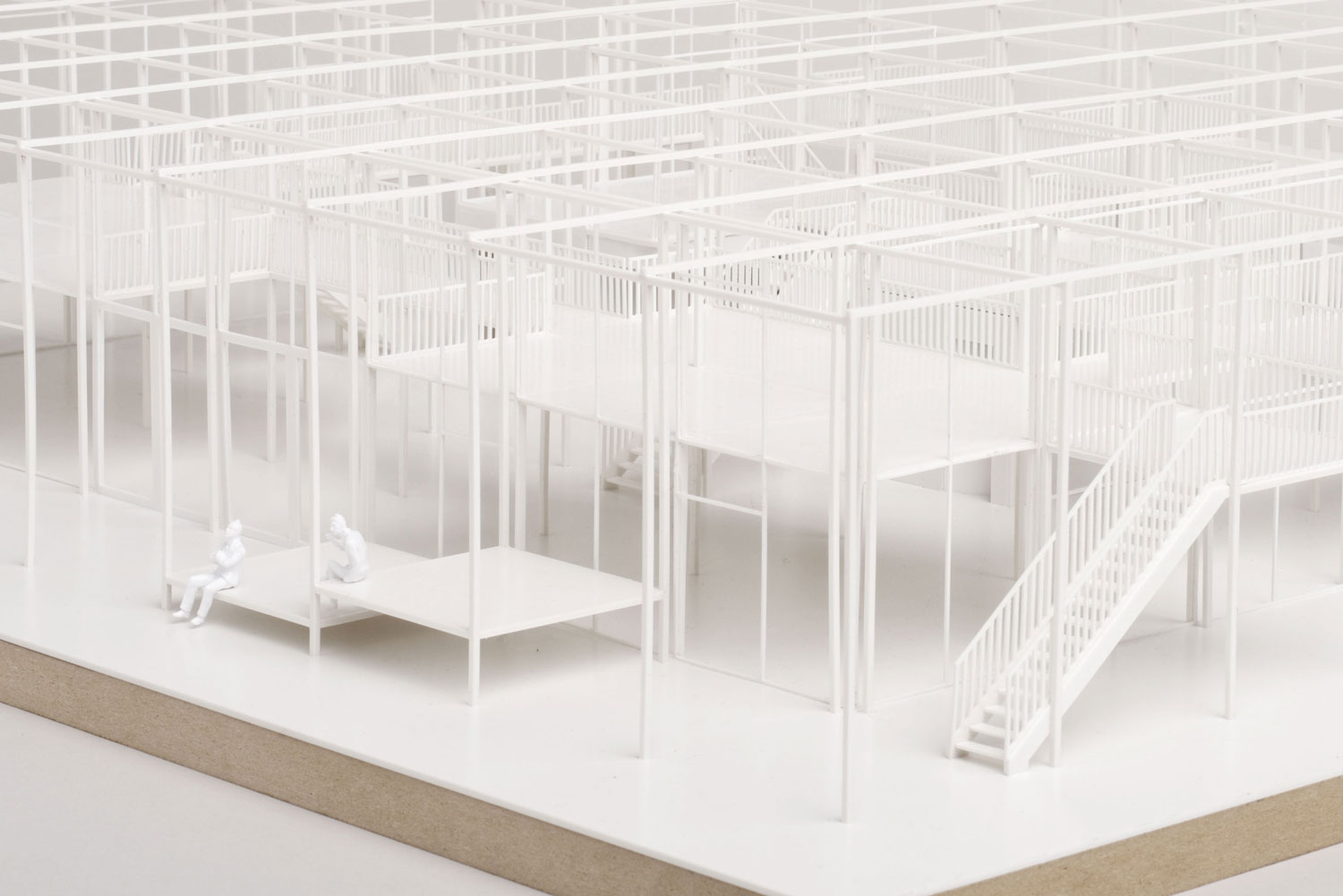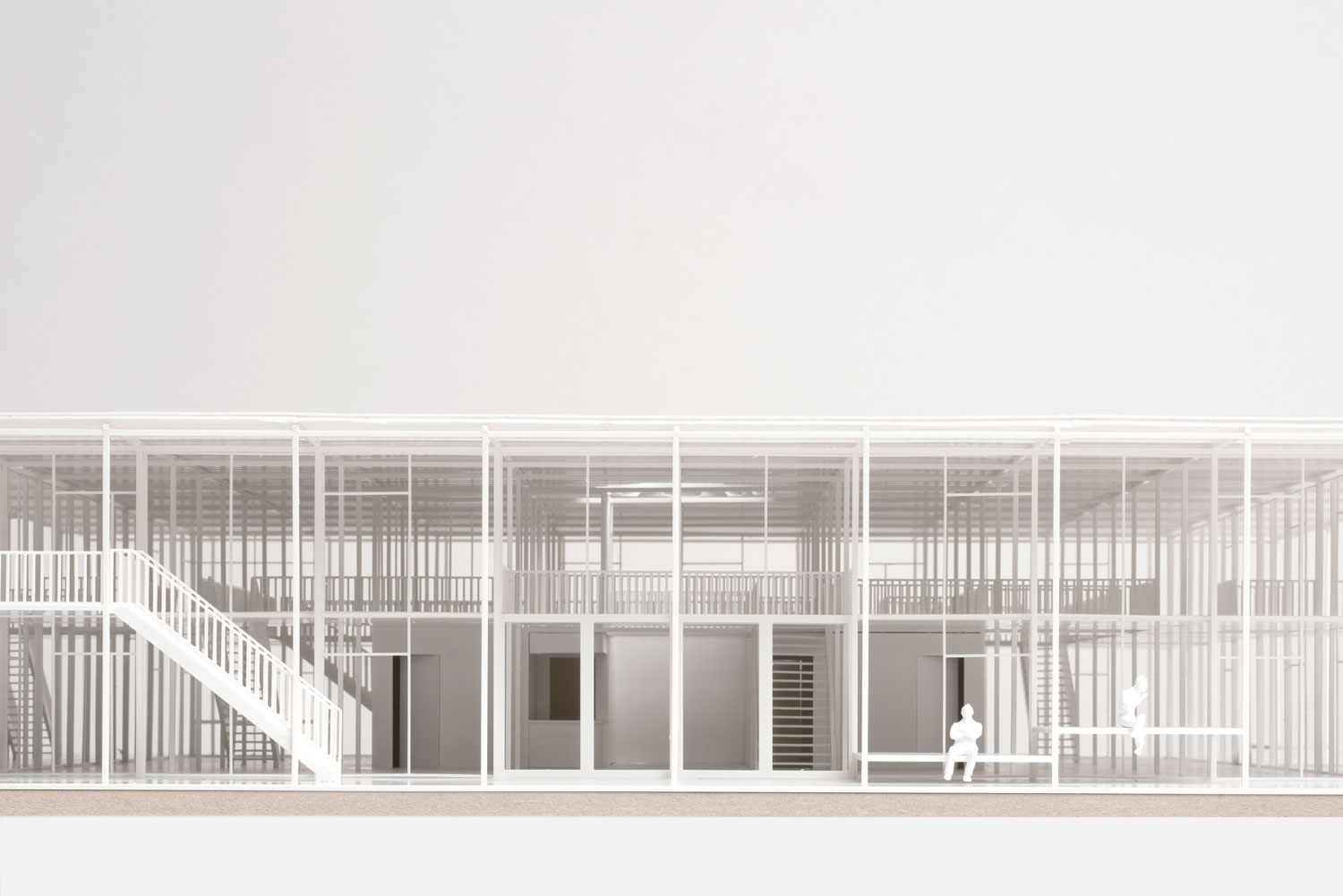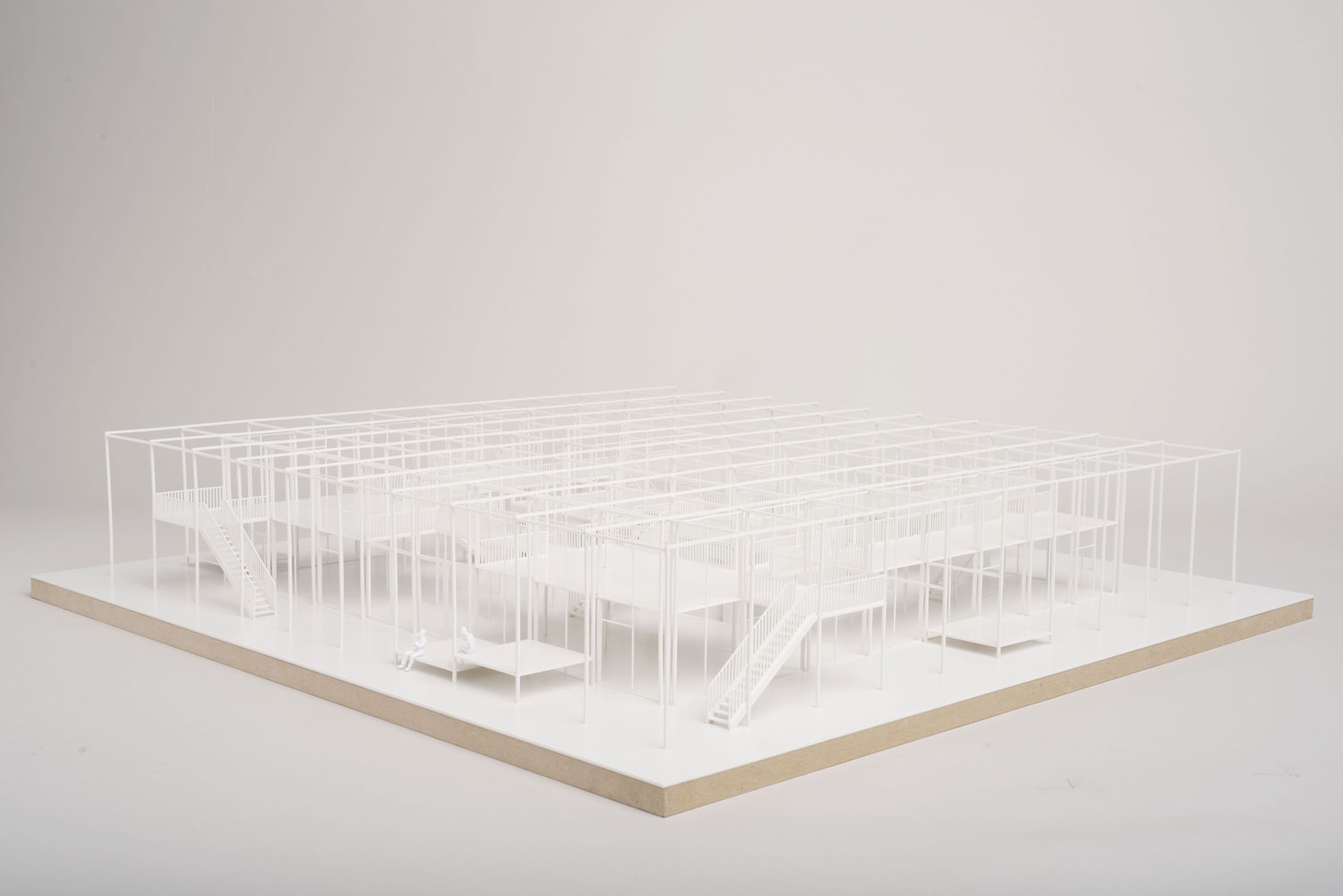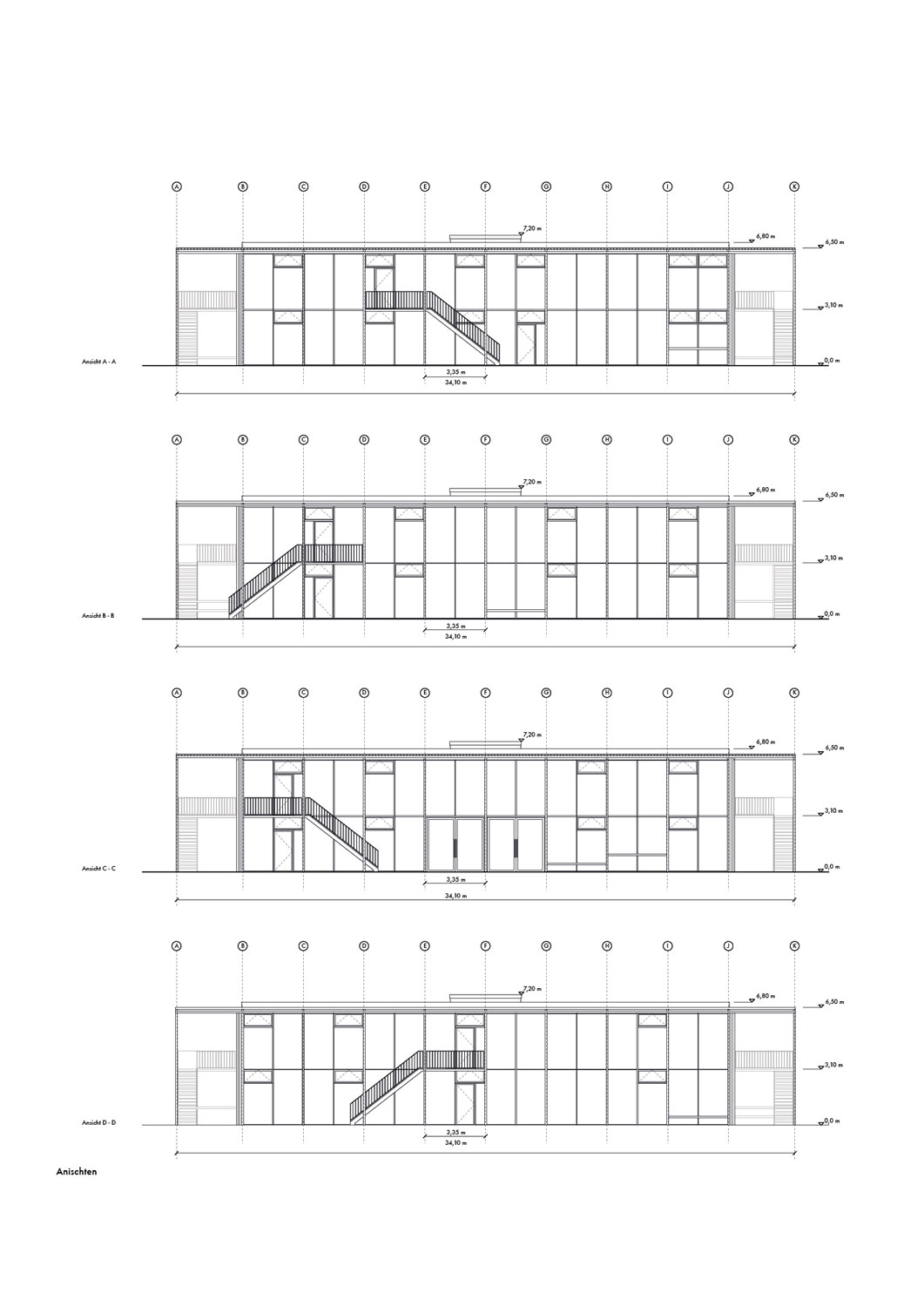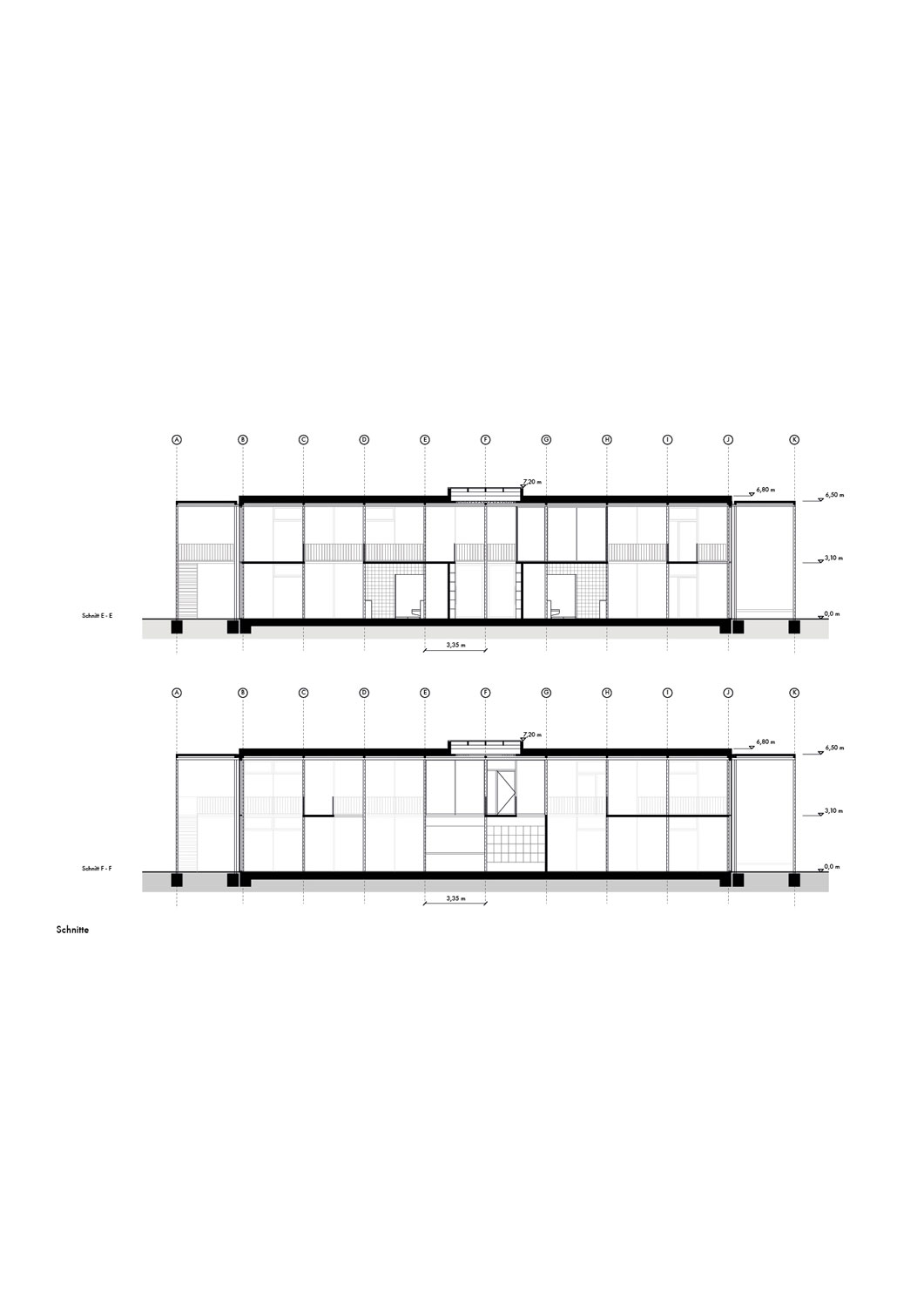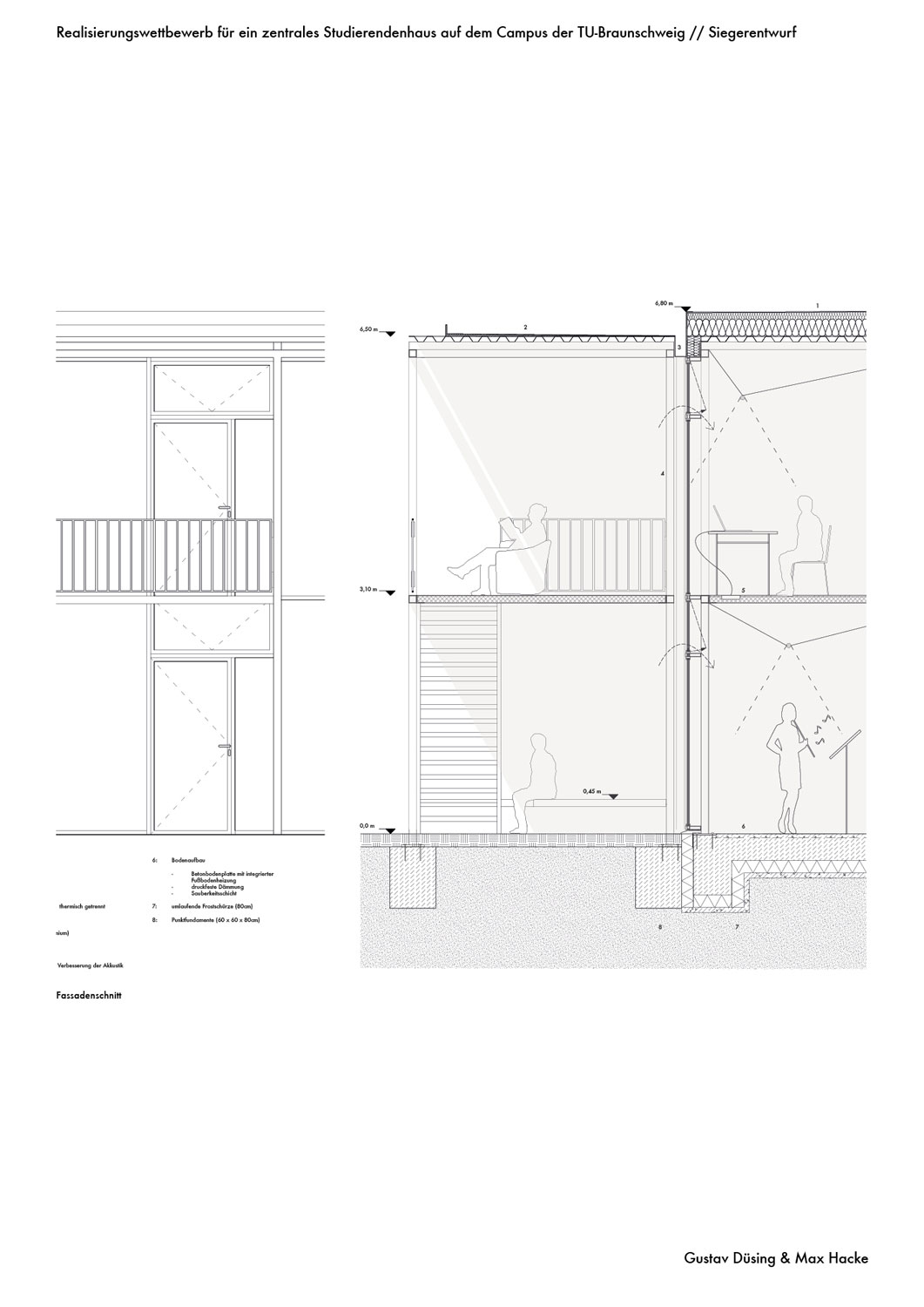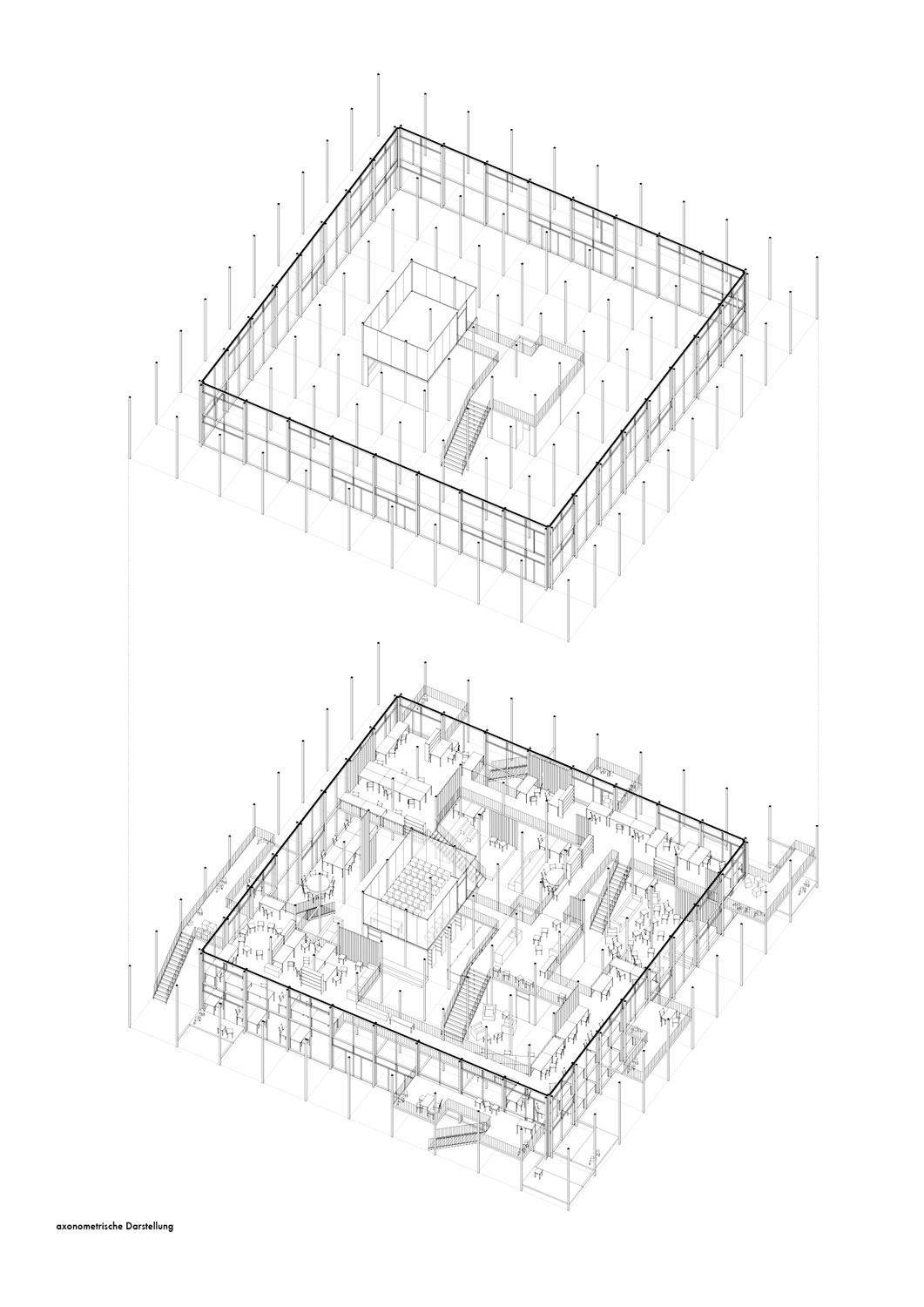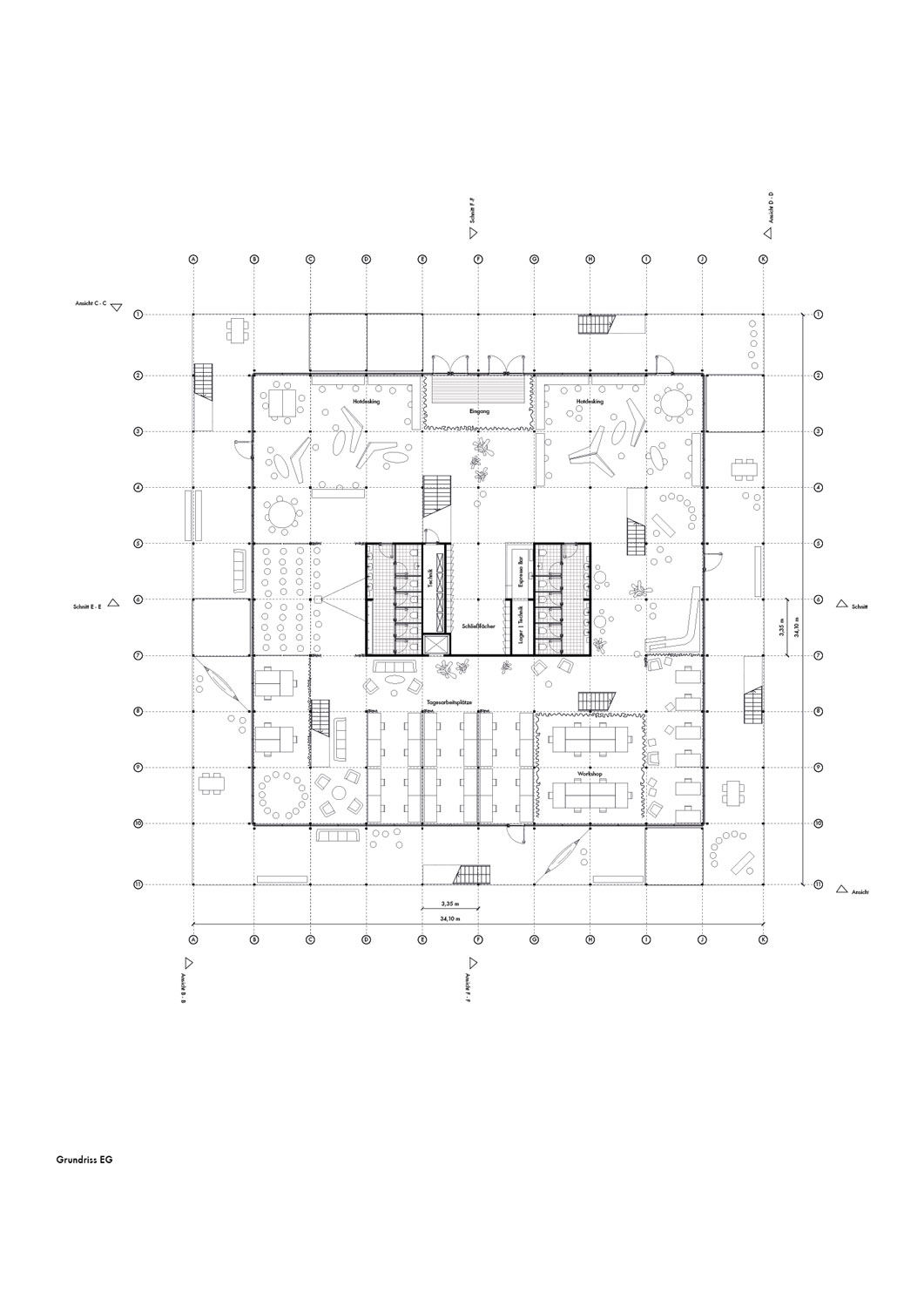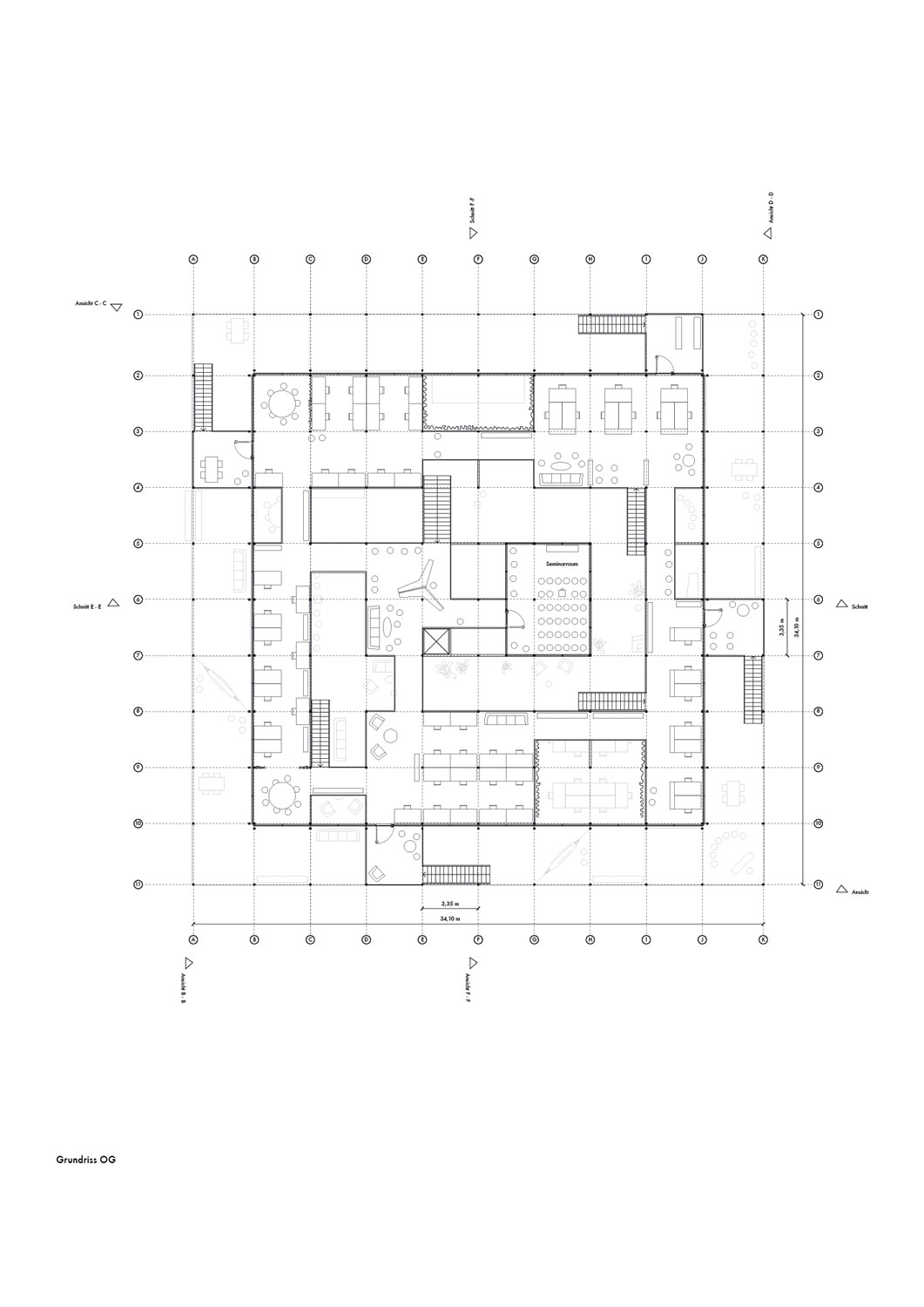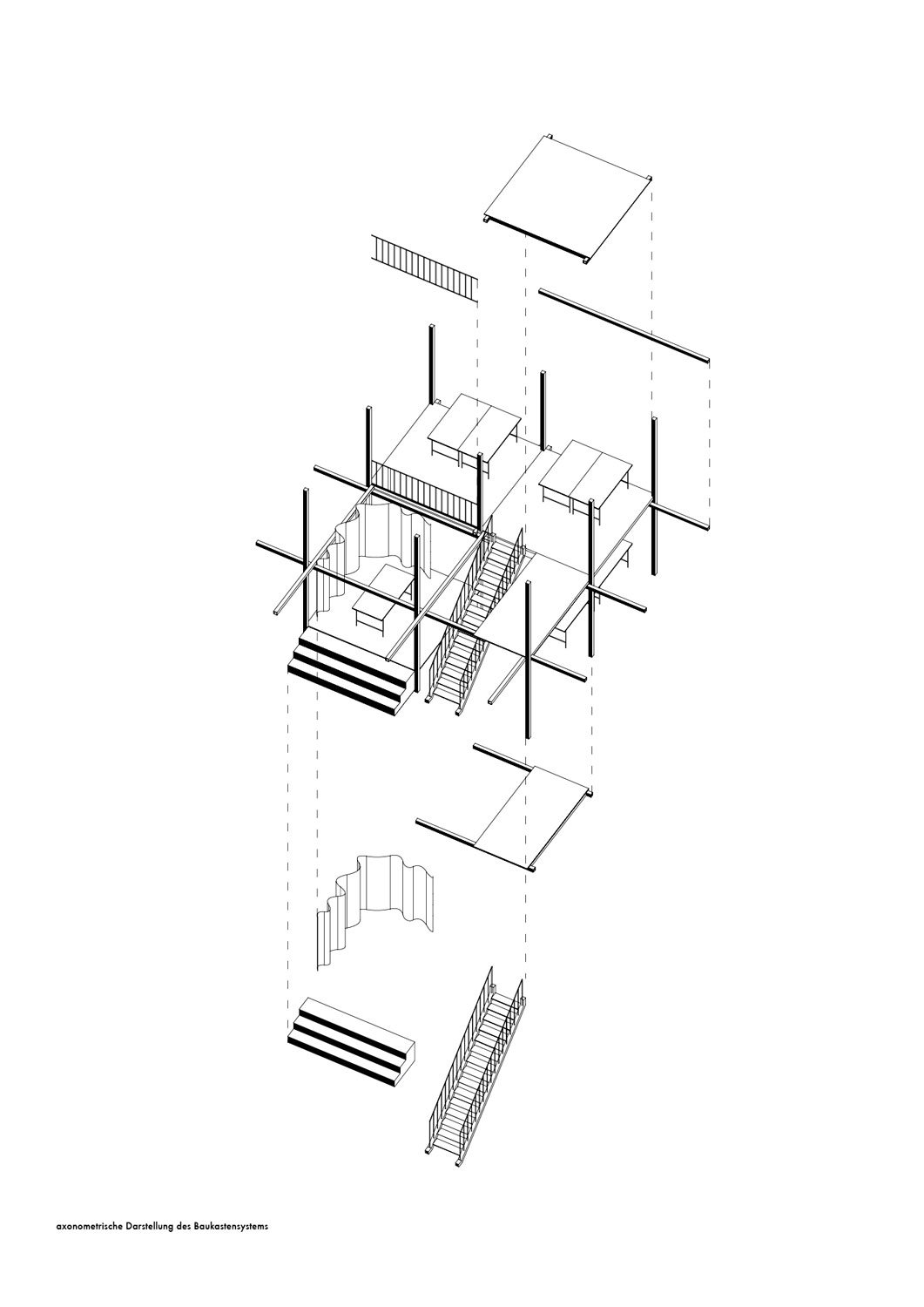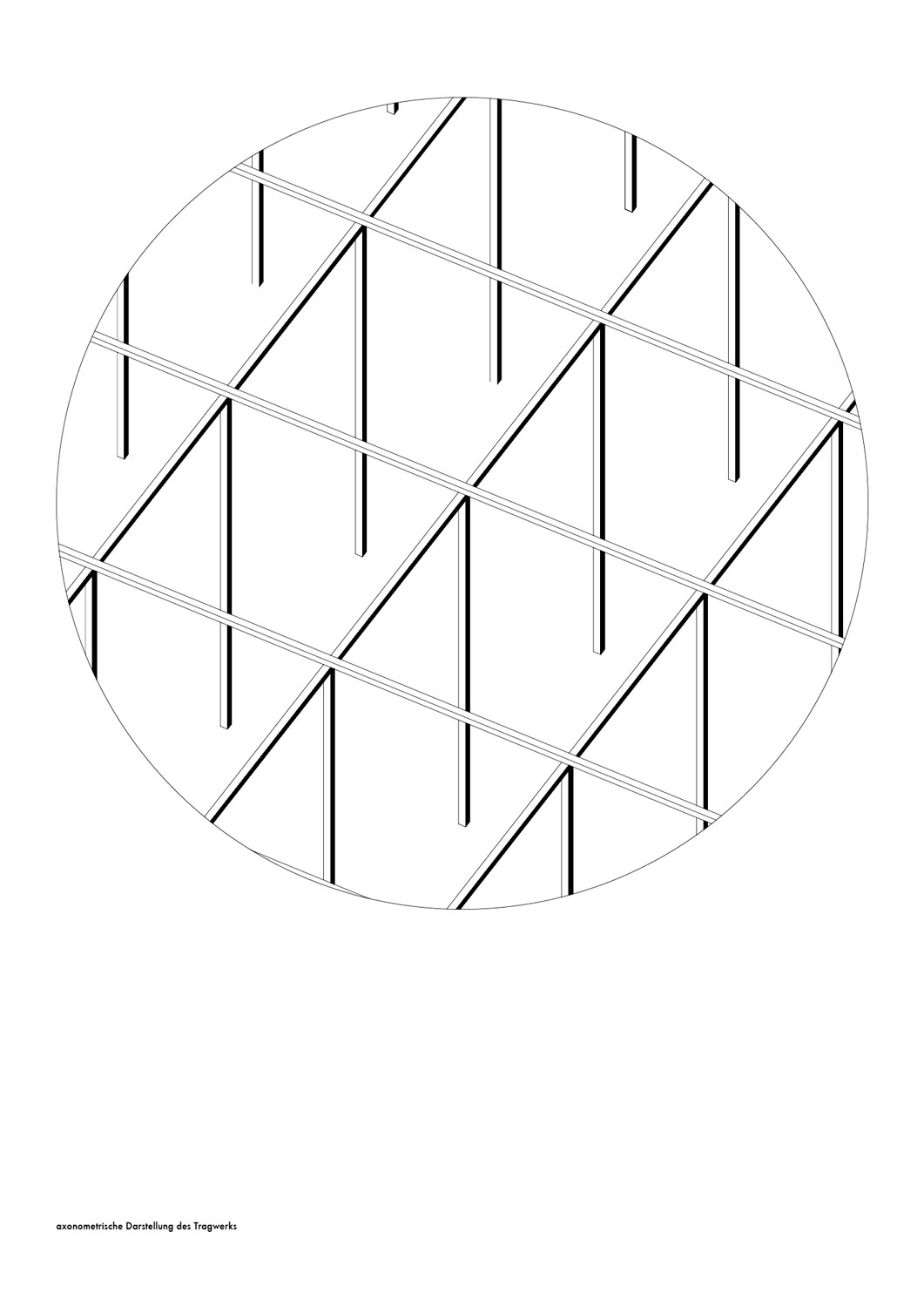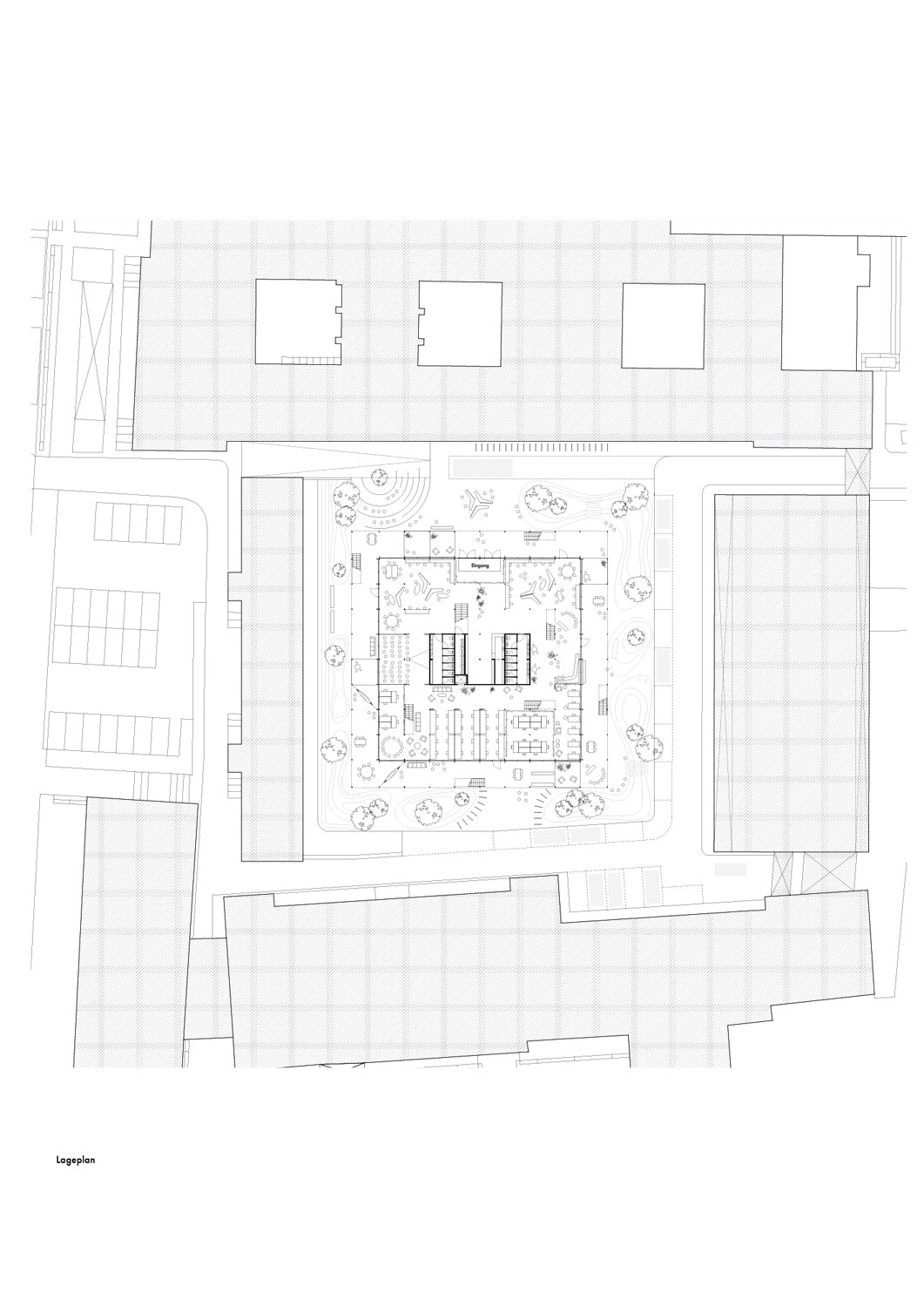1692-GUD-BER.DE-2016
Client: Technical University of Braunschweig
Status: Competition (2016)
Clasification: 1 prize
Location: Berlin, Germany
Coordinates: 52.273091, 10.526704
Climate: Continental, Temperate
Material: Metal
Environment: Urban
Visualizer: Studio
Scale: Medium
Types: Education, Office, Office building, University
The proposed building is understood as a multifunctional, informal space that allows for all kind of campus activities. Following the organizational idea of a superstructure, a system of thin columns set in a tight grid of 3.35m holds light platforms, stairs and bridges that can easily be reconfigured on a semesterly timescale. These three-dimensional layouts can range from intimate desk spaces to large-scale workshop configurations and can be separated with light curtains, shelving systems, and screens.
The kit-of-parts system holds endless variations and redefines the traditional studio layout. The logic continues on the outside perimeter forming a canopy, which integrates the surrounding through balconies and sitting areas. The project aims to define a new self-regulatory cultural center on the campus through events, lectures, and DIY culture.
The building is like a drawing; lines of filigree steel beams form a three-dimensional grid of square cubes – like the grid structures of Sol LeWitt. At first still bound to the figurative, the grid gradually became the foundation of all Sol LeWitt‘s works. It was a process of permanent reduction to the essential, the pure structure as theme and variation. Sol LeWitt, co-founder of conceptual art, defined his art as conceptual, the idea and the concept and not the perception of it should be in the foreground.
The learning centre stands for this concept; it has confined itself to the essentials, the outline; it remains wall-less, open, transparent, and flexible, can offer infinite variations and thus room for ideas for future architectures. Its lattice structure is the matrix underlying all activities, in which the students can act. In the reduction to a minimum of requirements by the architecture, the drawing room reaches a maximum of possibilities and thereby takes up the tradition of the signboards at the TU Braunschweig in a contemporary way: it was and is a place of temporary studying, experimenting and experiencing, and social exchange.
Building also always means responding to social changes and adopting to current living and working styles. In the present, flexible floor plans without massive walls correspond to the shift away from classic family living models to patchwork constellations, which are looking for a redefinition of community and private spaces. Likewise, the boundaries between work and home have become fluid: with digitisation, the place and flow of work have changed fundamentally for most professions, just like for students.
Students are no longer working at their desks, but on their laptops; they have become global and are able to study independently without a fixed location, meeting for an exchange, for a presentation or to relax with other people, cultivating local social contacts. The learning centre, a two-storey square building, functions as a diminished scale of the world, a model that houses the global as well as the local. Without fixed walls, and thus without permanent restriction. Students can decide for themselves and decide according to their own needs whether he or she is erecting temporary walls, whether they will be working in transparency or in a closed space. Both are possible and both are necessary – supposed to be tested and experienced by the students themselves.
Except for a fixed central core, with technical and workshop rooms and a central espresso bar and seminar rooms on the upper floor, the workspaces can be freely arranged by means of a modular system with sound-proofing curtains. A workplace can be converted into a grandstand for presentations, the adjacent one with suspended curtains to a temporary closed studio; unused space can be spontaneously transformed into a chill-out zone and the room height of 6 m allows the students to build large-scale models and implement their ideas 1:1. Meanwhile, the same structure can also be used for further cultural events and transformed into a temporary concert hall, cinema, or theater.
The continuous flux also applies to the outer space; not only the boundary lines in the interior, but also between interior and exterior become permeable. The surroundings, the context becomes part of the interior through the transparency of the building, while the inner space system can be applied to the directly adjoining outer space, the terraces and the balconies. These actions, seating arrangements, temporary bars, etc., which are located in the outer space, reinforce the learning centre in the campus area and its surrounding buildings.
Just as contemporary philosophical orientation, speculative realism, conceives the world from abstraction, the learning centre does not try to offer the one room, the hall, in the original sense, but the possibility of thinking in varying speculations, real and virtual spaces in which the fictions of our time can circulate. Fifty years earlier, Sol LeWitt had already created the ground for this: an unhierarchical structure which, in its procedural and serial quality, does not impose a spatial and thus conceptual limitation, it creates the ground for ideas that go beyond the visually perceptible.
